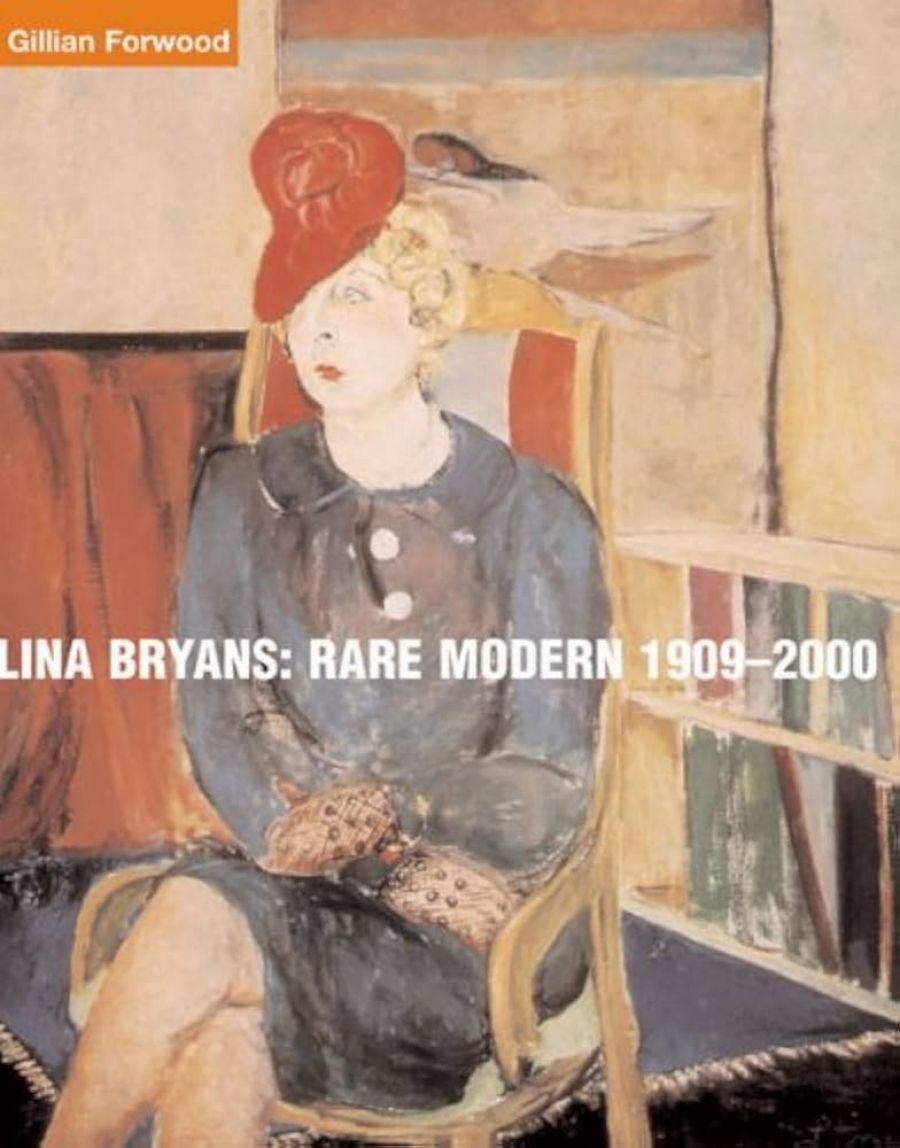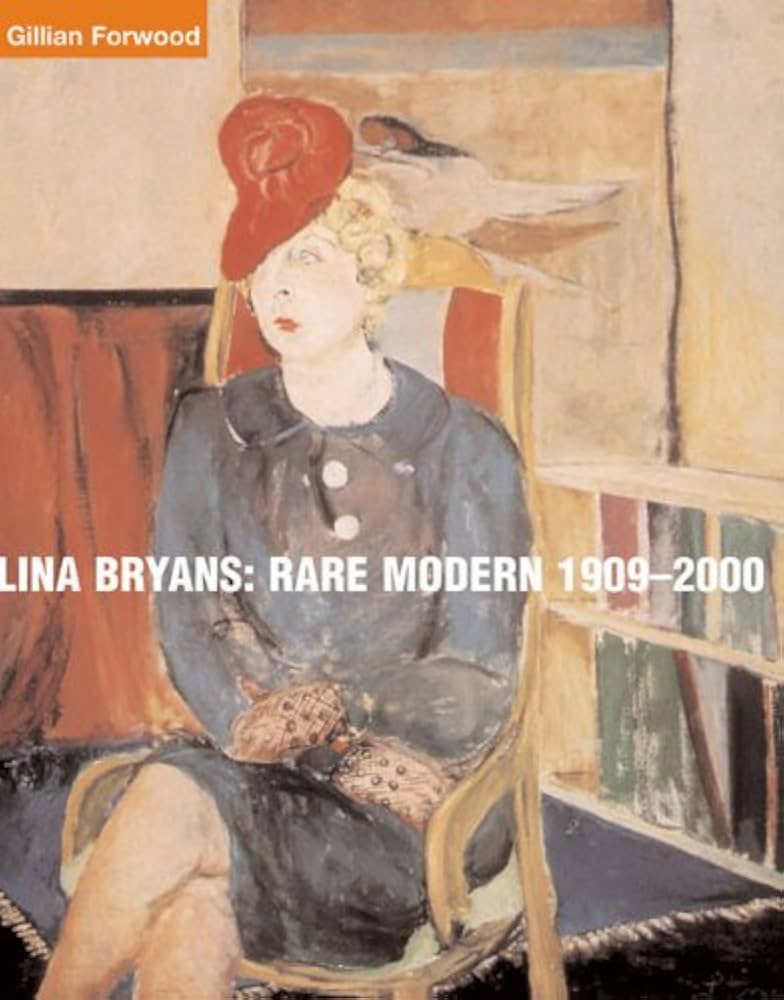
- Free Article: No
- Contents Category: Art
- Review Article: Yes
- Article Title: Insouciant Chic
- Online Only: No
- Custom Highlight Text:
Lina Bryans’s painting The Babe is Wise captures the ‘insouciant chic’ of the New Woman in 1940: independent and self-assured, the subject stares at the viewer from beneath a sharply angled hat. A portrait of the artist’s close friend, author Jean Campbell (whose novel inspired the painting’s title), The Babe is Wise became Bryans’s most famous painting, and its subject captures the artist’s own attitude to life.
Gillian Forwood’s handsome new book, Lina Bryans: Rare Modern 1909–2000, recalls the life and work of a brave, unconventional and generous woman who single-mindedly pursued a career as an artist from the late 1930s until her death three years ago. This lavish Miegunyah Press publication serves both author and artist well, reproducing numerous images in colour, many for the first time.
- Book 1 Title: Lina Bryans
- Book 1 Subtitle: Rare Modern 1909-2000
- Book 1 Biblio: Miegunyah Press, $89.95 hb, 214pp, 0 522 85037 5
- Book 1 Cover Small (400 x 600):

- Book 1 Cover (800 x 1200):

As is so often the case in stories about women artists, Bryans was a great supporter of fellow (male) artists: William Frater (with whom she had a relationship for more than ten years until 1948), Adrian Lawlor, Alan Sumner, Ian Fairweather and Colin McCahon, among others. Her keen interest in people was reflected in the fact that much of her oeuvre constitutes portraits of friends, mostly members of Melbourne’s literary and cultural milieux. Like the war artist Stella Bowen, Bryans mixed in cultivated circles, had unconventional relationships and bore a child that she substantially raised alone. Drusilla Modjeska could well have considered her another candidate for her recent book Stravinsky’s Lunch (1999), which asked the fundamental and seemingly perennial question: can women artists (in Modjeska’s case, Bowen and Grace Cossington Smith) possibly juggle family, love and art? The answer as far as these women were concerned was Yes, but what makes their stories so pertinent is the way in which they struggled to find a balance between all three.
Forwood successfully combines scholarly discussion of individual paintings with a lively portrayal of Melbourne’s cultural landscape over several decades. In 1940, while John and Sunday Reed were busy creating a heady bohemian set at Heide, the less well-known Bryans purchased an old hotel nearby in Heidelberg called Darebin Bridge House, which she decorated with flair. She fostered an alternative community of artists and writers, including Vance and Nettie Palmer. Here she held numerous dinners and large parties:
She would go to the market and lavishly choose simple and delicate produce – fresh asparagus and artichokes, crates of strawberries and exotic fruit – then return to cook huge meals herself in the old kitchen. She was a marvellous hostess. Yet, when she was confident that her guests were all laughing and arguing and splendidly enjoying themselves, Bryans would sometimes slip away, even going to see a film, to return several hours later.
Forwood develops a vibrant picture of what became known as the ‘Painters’ Pub’, describing the ongoing struggle of Bryans and her colleagues for recognition by the conservative art establishment. Bryans strongly defended modernism in the 1930s and 1940s in the face of pervasive conservatism, although she was not a radical modernist herself: her family background and her association with the charismatic Scotsman Frater linked her firmly to the establishment. Nonetheless, it is interesting to note a resemblance between Bryans’s 1943 Head of a Woman to a series of Head portraits of the Heide set that Sidney Nolan began working on only a year later. While Nolan was the more transgressive artist of the two, Bryans was certainly experimenting with vigorous brushwork, flattened picture planes and the penetrating gaze of her sitters.
Bryans’s paintings stand up well to close scrutiny, and the book’s colour reproductions do them justice. While portraiture was an important aspect of her work, she was also an accomplished landscape artist, depicting the inner and outer suburbs of Melbourne, as well as venturing further afield. Some of her best landscapes were executed in the 1950s. By the following decade they were edging towards abstraction and showing the influence of figures such as Fred Williams and her close friend Ian Fairweather. One of the book’s few minor irritations is the tendency for the author to discuss, occasionally at some length, paintings that are not reproduced. While the selection of images is good and generous, perhaps more judicious editing could have alleviated this problem. One further quibble: Bryans’s paintings are incorrectly said to exist in most regional galleries (actually only those in Victoria). However, this is mere nit-picking and does not detract from the book’s many strengths.
Lina Bryans: Rare Modern 1909–2000 is a lively and scholarly addition to Australian art history. Clearly a labour of love for the author, it brings to life a strong and engaging woman whose dedication to art over a period of some seventy years should at last bring her the attention that she deserves.


Comments powered by CComment